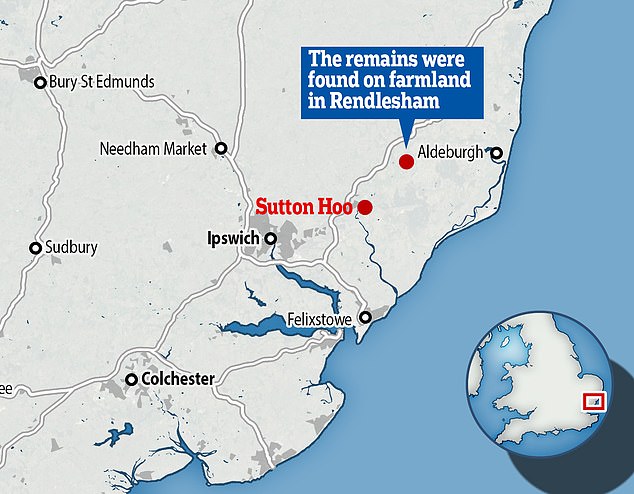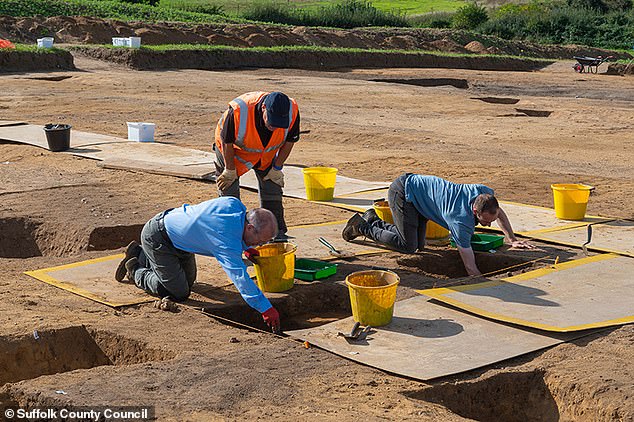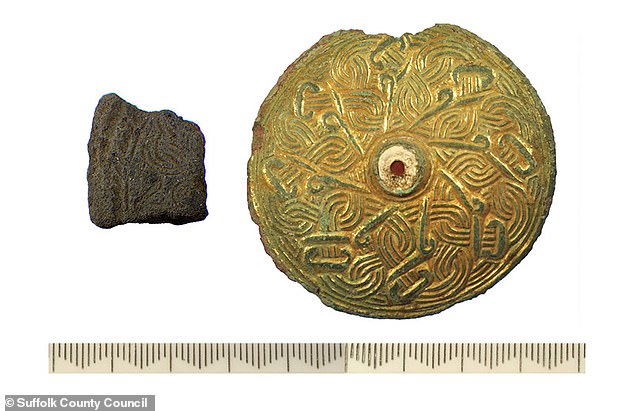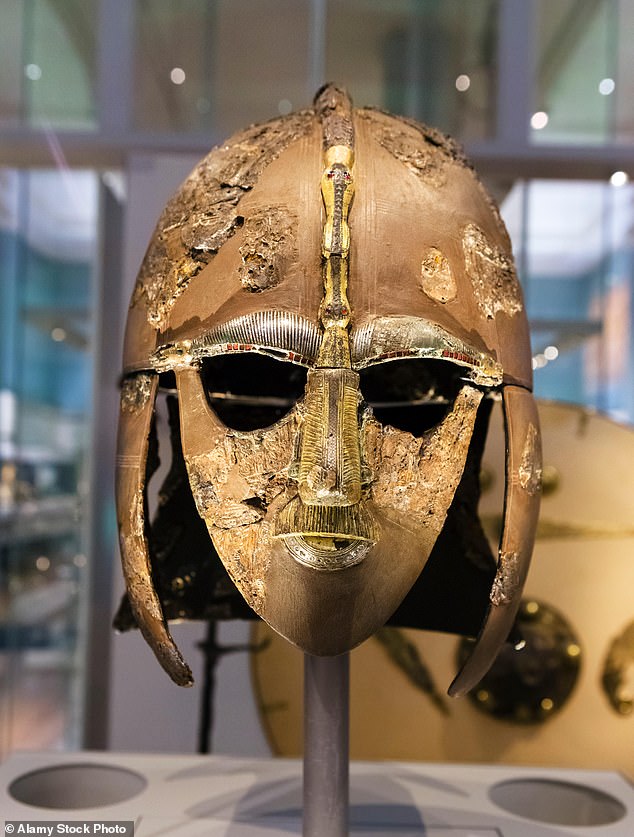Remains of a ‘possible temple’ from 1,400 years ago are discovered in Suffolk farmland close to the famous Sutton Hoo dig site
>
The remains of what could be an ancient temple have been discovered on private farmland just four miles from the famous Sutton Hoo burial site.
Suffolk County Council said the ruins of a large wooden royal hall were found at Rendlesham last year, confirming the place was a royal settlement.
Now, subsequent excavations have uncovered evidence of a possible temple, or house of worship, at the site.
Professor Christopher Scull, from Cardiff University and University College London, said: “The results of the excavations at Rendlesham speak clearly to the power and wealth of the kings of eastern England and the sophistication of the society they ruled.”
“The potential temple, or house of worship, provides rare and remarkable evidence of the practice of pre-Christian beliefs that underpinned early English society on a royal site.”
Archaeologists have discovered the foundations of a large building that they believe was likely a temple or house of worship dedicated to pre-Christian gods

Just four miles east of the Sutton Hoo burial site, the royal complex at Rendlesham is now believed to be more than twice as large as previously thought
Excavations carried out by Suffolk County Council’s ‘Rendlesham Unearthing’ community archeology project have uncovered the foundations of a building measuring 10 meters long and five meters wide.
Professor Scull, who led the study, said the distinctive foundations suggested the building was “unusually high and strongly built for its size, so it may have been purpose-built”.
Professor Scull explained: “It is very similar to buildings elsewhere in England which are seen as temples or houses of worship, so they may have been used for pre-Christian worship by the early East Angles kings.”
Writings by medieval historians indicate that a king of East Anglia maintained a temple for both Christian and pagan worship at the time this structure was built.
However, it is impossible to say definitively what this building was used for or what any cult might have involved.

Volunteers from the Community Archeology Project have worked to uncover the distinctive foundations of a temple in the royal complex at Rendlesham
Experts say the site is unique for this time period in its size and complexity.
The royal complex is surrounded by a 1-mile (1.5 km) moat, covering an area of 15 hectares – the equivalent of about 20 football fields.
So far, archaeologists have found three wooden buildings, two graves, and evidence of previous settlements dating back to the Stone Age.
Researchers now believe the area may have been used by humans for more than 6,000 years, as they have discovered evidence of Neolithic, Bronze Age, Iron Age and Roman activity.
Evidence suggests that the site may have once been a Roman tax collection center that survived the collapse of the empire in Britain.
The site was likely re-established as the seat of the newly formed East Anglican Kingdom around 570 AD.
Councilor Melanie Vigo di Galidoro, Deputy Cabinet Member for Conservation Landscapes and Monuments at Suffolk County Council, said: “This year’s results conclude three seasons of fieldwork that underscores the international importance of Rendlesham archaeology and its fundamental importance to our knowledge of early England.”
“All project participants can be proud that together we have achieved something great.”

Archaeologists have discovered baked clay molds (left) used to cast decorated horse harnesses such as those found at the nearby Sutton Hoo burial site (right).

Many of the funerary objects found at Sutton Hoo are now believed to have been manufactured in the workshops of the royal complex at Rendlesham.
The site is also believed to have a deep connection to the Sutton Hoo site where a stunning burial mound was discovered in 1939.
Hidden inside a buried ship, archaeologists have discovered a trove of treasure that has revolutionized our understanding of the Anglo-Saxons.
Detailed metalwork such as the famous Sutton Hoo helmet have been found in the tomb along with jewelery from as far away as Egypt and Sri Lanka.
Some of these treasures, such as decorated horse harnesses, are now thought to have been made in Rendlesham’s 7th-century workshops.
The burial mound also contained the same fusion of Christian and pagan images, which has now been hinted at in the discovery of the temple at Rendlesham.
(Tags for translation)dailymail

